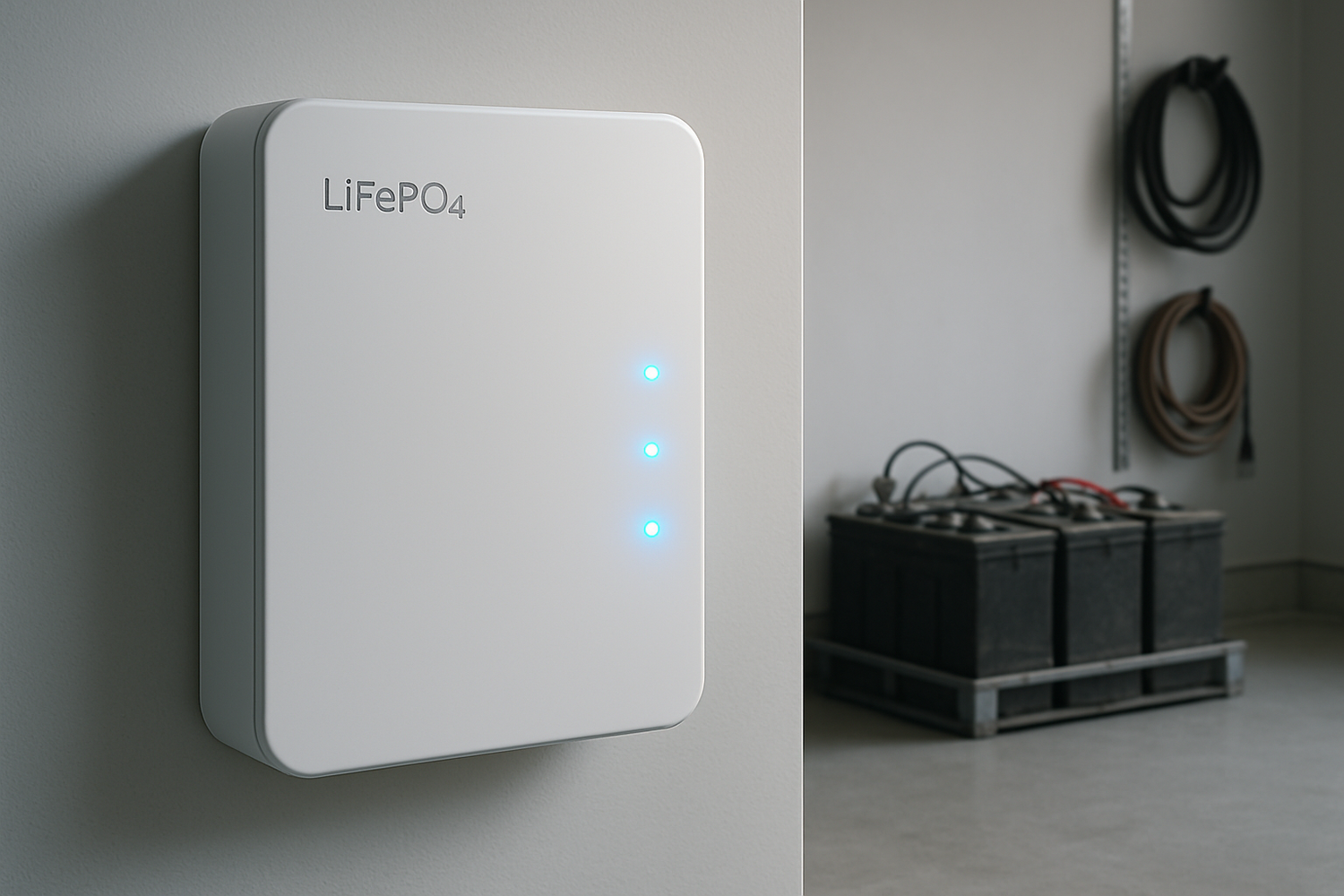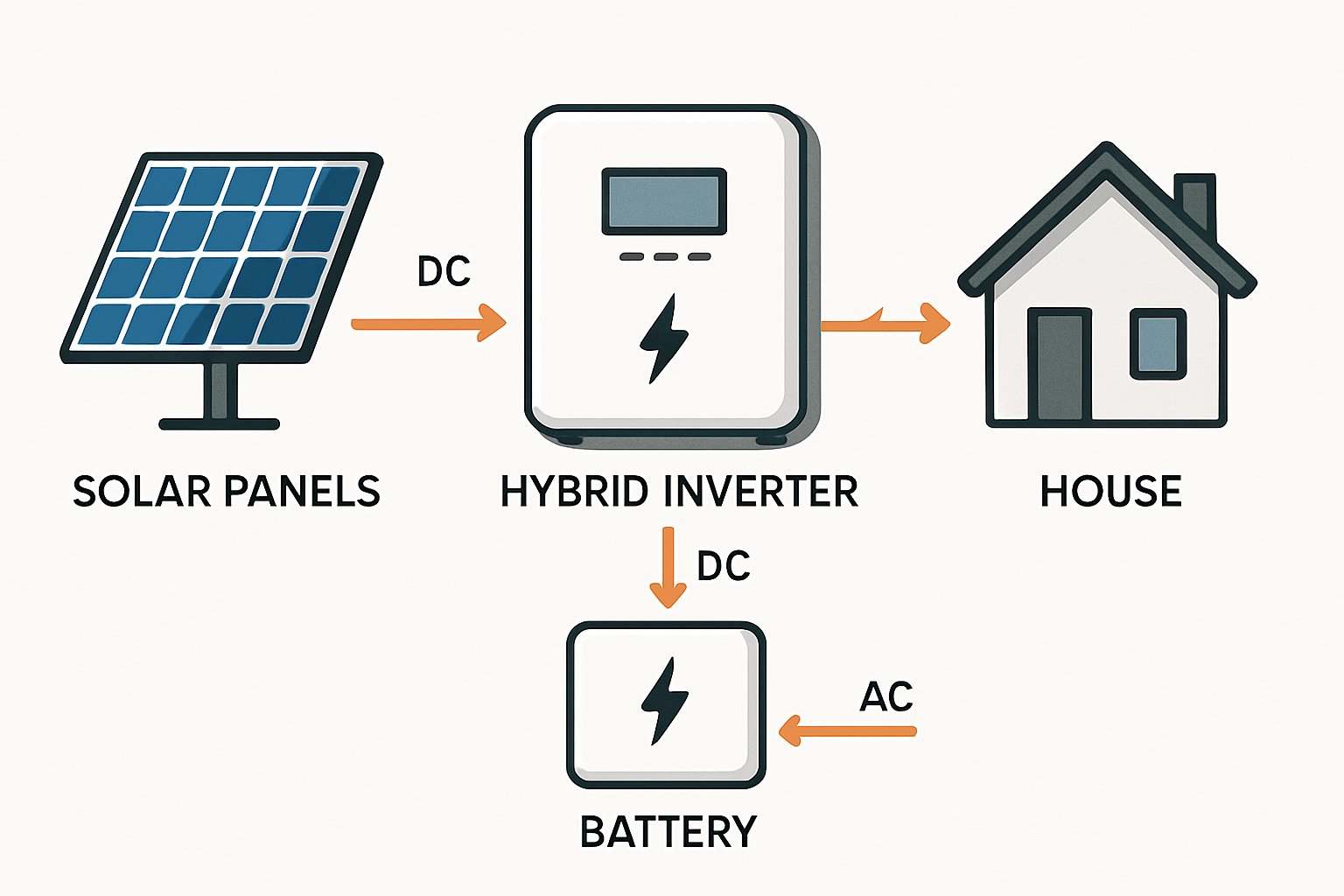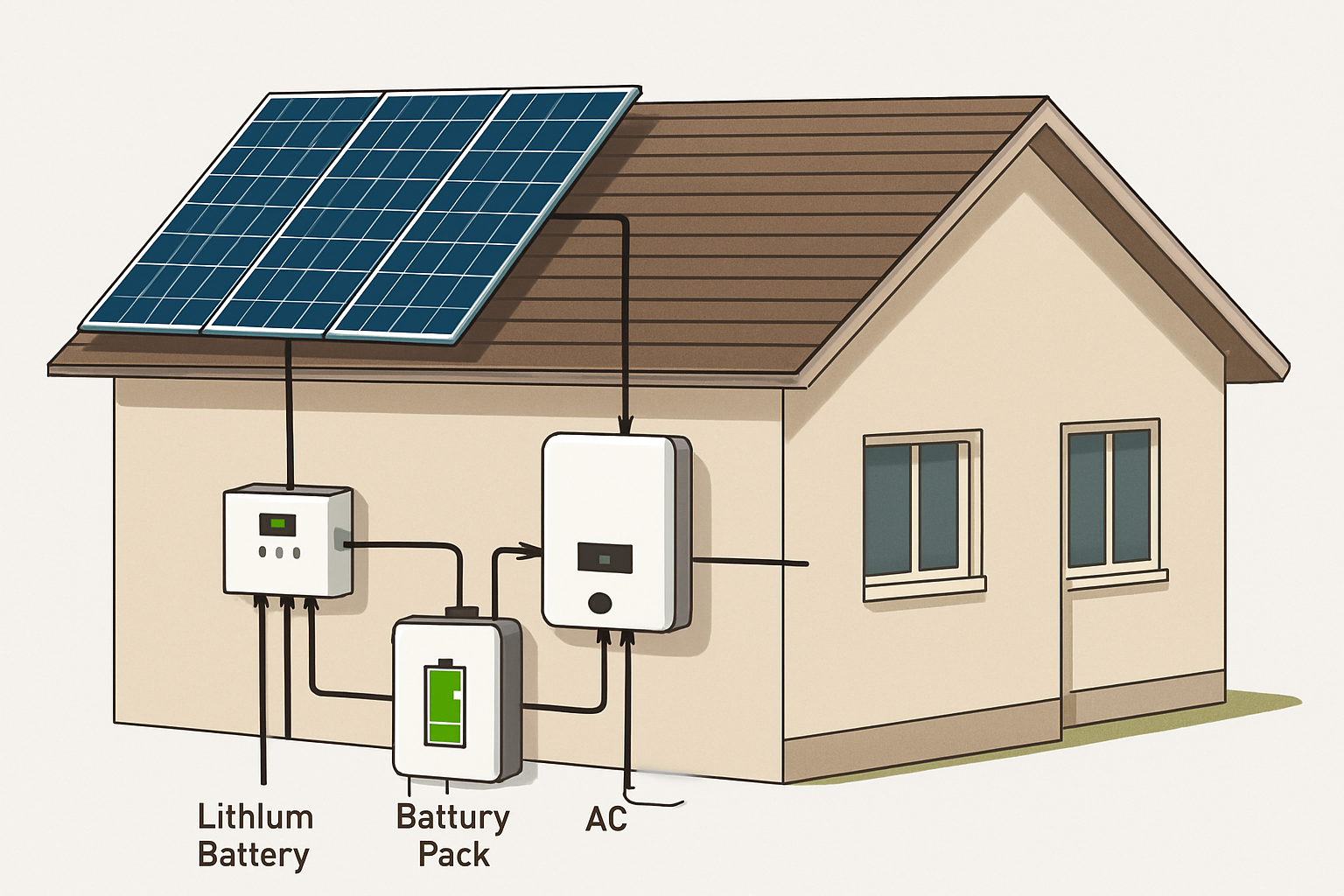Many homeowners with solar installations face a critical decision as their original energy storage systems age. This case study follows a typical scenario: a household looking to replace an outdated battery bank. The goal was to find a modern solution that offered better performance, greater safety, and long-term value. The decision to upgrade to a Lithium Iron Phosphate (LiFePO4) battery storage system marked a significant improvement in their energy independence.
The Catalyst for Change: Limitations of an Aging System
The original home battery storage system, based on traditional lead-acid technology, had served its purpose for several years. However, its limitations became increasingly apparent. Frequent power interruptions and rising utility costs prompted a re-evaluation of the home's energy resilience and efficiency.
Declining Performance and High Maintenance
The primary issue was a noticeable decline in performance. The lead-acid batteries could no longer hold a charge as effectively, leading to shorter backup periods. Powering multiple appliances simultaneously often resulted in voltage sags, and the system struggled to meet peak demand. Furthermore, the maintenance was becoming a chore, requiring regular checks of electrolyte levels and cleaning of corrosive terminals. A lead-acid battery's usable capacity is often limited to 50% of its total rating to avoid damage, which meant the 10 kWh system only provided about 5 kWh of actual energy.
Evaluating Modern Battery Chemistries
The search for a replacement involved comparing the most common home battery technologies. The choice came down to LiFePO4 and other lithium-ion chemistries. LiFePO4 stood out for its superior safety, long cycle life, and overall stability. Unlike some other lithium-ion types, LiFePO4 chemistry is highly resistant to thermal runaway, making it a safer option for a home installation.
| Feature | LiFePO4 Battery | Lead-Acid Battery |
|---|---|---|
| Cycle Life | 3,000 – 7,000+ cycles | 300 – 1,000 cycles |
| Usable Capacity (DoD) | 80% – 100% | 50% |
| Efficiency | ~95% | 80% – 85% |
| Maintenance | None | Regular checks required |
| Safety | High thermal stability, low risk | Can release hydrogen gas, risk of acid leaks |
The Selection Process: Sizing and Specifications
Choosing the right LiFePO4 battery upgrade required careful planning. The process went beyond simply replacing the old unit; it was an opportunity to build a more robust and future-proof energy system tailored to the household's specific needs.
Calculating Energy Storage Needs
The first step was to analyze the home's daily energy consumption. This involved reviewing past utility bills and using a home energy monitor to track real-time usage. The goal was to size a battery that could cover evening energy needs, provide at least two days of backup power during an outage, and accommodate potential future increases in demand, such as an electric vehicle. Based on this, a 15 kWh LiFePO4 system was selected to provide ample capacity.
Key Specifications for a LiFePO4 Battery
Several technical factors were critical in the selection. A 48V LiFePO4 battery was chosen to match the existing solar inverter. The focus then shifted to cycle life and Depth of Discharge (DoD). A quality LiFePO4 battery can deliver thousands of cycles at 80% DoD or more. As detailed in the Ultimate Reference for Solar Storage Performance, understanding the relationship between cycle life and DoD is crucial for evaluating long-term value. Finally, a system with an advanced Battery Management System (BMS) was prioritized. The BMS is essential for protecting the cells from overcharging, over-discharging, and extreme temperatures, ensuring both safety and longevity.
Installation and System Integration
The transition from the old lead-acid bank to the new LiFePO4 battery storage system was a multi-step process. While the physical installation was straightforward, the system integration required technical adjustments to ensure optimal performance. Disclaimer: This section describes a general process. All electrical work should be performed by a qualified professional.
Physical Setup and Configuration
One of the immediate advantages was the physical size and weight. The LiFePO4 battery was significantly more compact and lighter than the lead-acid bank of equivalent capacity, freeing up valuable space. After securely mounting the new battery, the critical task was to reconfigure the solar charge controller and inverter. The charging parameters—such as bulk, absorption, and float voltages—were adjusted to the specifications recommended for LiFePO4 chemistry. This step is vital to prevent damage and maximize the battery's lifespan.
A New Era of Energy Independence
The upgrade brought immediate and substantial improvements to the home's energy system. The benefits were not just theoretical; they translated into tangible gains in performance, cost savings, and peace of mind.
Tangible Performance Improvements
The new LiFePO4 system delivered consistent, stable power without the voltage sags experienced previously. With its ability to be discharged up to 90% or more, the 15 kWh battery provided over 13.5 kWh of usable energy, a massive improvement over the old system. The battery also charged faster from the solar panels, maximizing the use of available sunlight. The efficiency gain was also notable; with around 95% round-trip efficiency, very little solar energy was wasted during the storage and retrieval process.
Financial and Lifestyle Impact
While the upfront cost of a lithium iron phosphate battery installation is higher than lead-acid, the long-term economics are compelling. The extended lifespan of 10-15 years means fewer replacements, resulting in a lower total cost of ownership. This investment is further supported by falling battery costs globally. According to the International Renewable Energy Agency (IRENA), the installed costs of battery storage projects have declined dramatically, making advanced technologies more accessible. The upgrade provided energy security, keeping the lights on during grid outages and reducing reliance on an unpredictable utility grid.
Final Thoughts on the LiFePO4 Upgrade
This case study demonstrates the clear advantages of upgrading from an older battery technology to a modern LiFePO4 home battery storage system. The decision resulted in a more powerful, reliable, and safer energy solution. For any homeowner with an existing solar installation, evaluating a battery upgrade is a strategic step toward achieving greater energy resilience and long-term financial savings. The shift to LiFePO4 technology represents a move toward a smarter and more sustainable energy future.
Frequently Asked Questions
Is a LiFePO4 battery a direct replacement for a lead-acid battery?
Not exactly. While they serve the same function, a LiFePO4 battery requires different charging parameters. To ensure safety and optimal performance, you must reconfigure your solar charge controller and inverter for the specific voltage settings of the new lithium battery. In some cases, an equipment upgrade may be necessary.
How does the upfront cost of LiFePO4 compare to other batteries?
The initial purchase price for a LiFePO4 battery is generally higher than for a lead-acid battery of the same capacity. However, its superior cycle life—often 5 to 10 times longer—and deeper usable capacity mean the long-term cost per kWh stored is significantly lower, making it a more economical investment over the life of the system.
What is the real-world lifespan of a LiFePO4 home battery?
A high-quality LiFePO4 battery used in a home storage application can last for 10 to 20 years. They are typically rated for 3,000 to 7,000 deep charge-discharge cycles before their capacity reduces to 80% of the original rating. For a typical home using one cycle per day, this translates to many years of reliable service.





Leave a comment
All comments are moderated before being published.
This site is protected by hCaptcha and the hCaptcha Privacy Policy and Terms of Service apply.